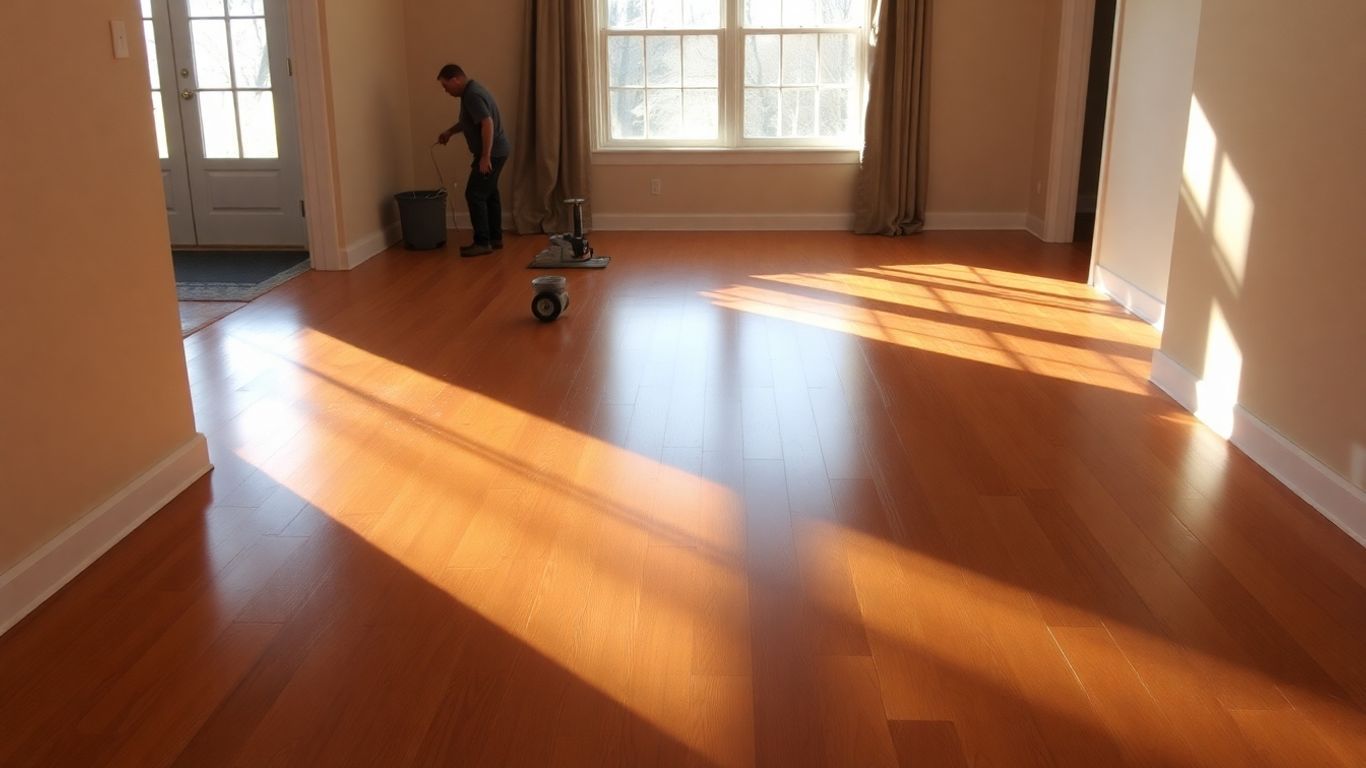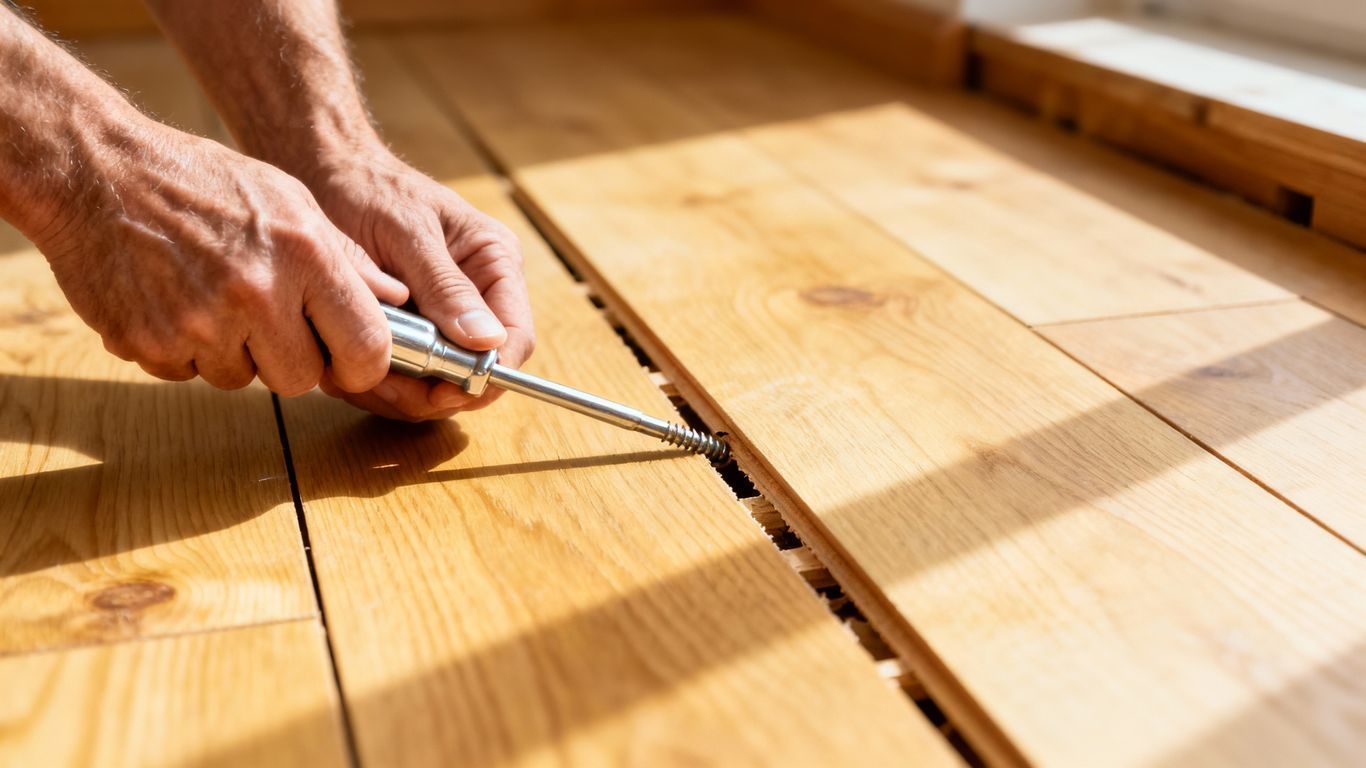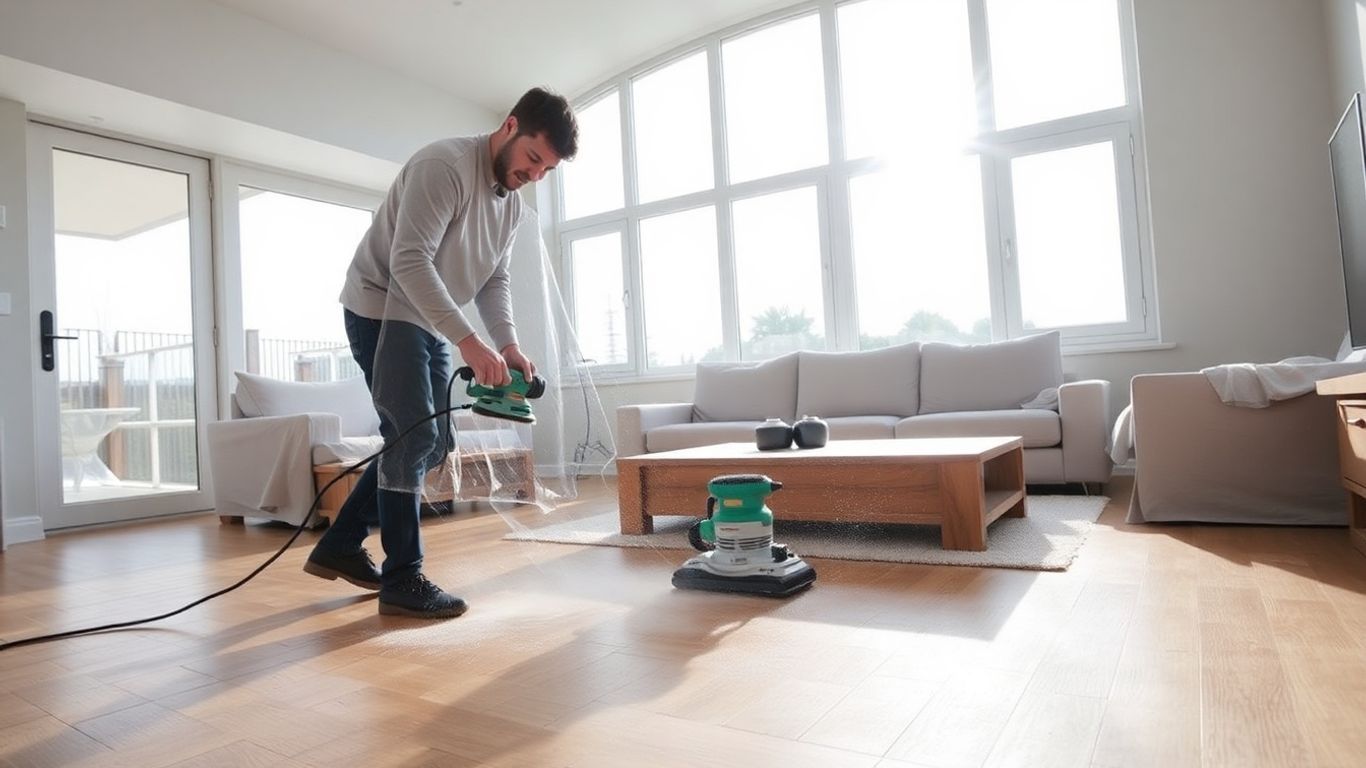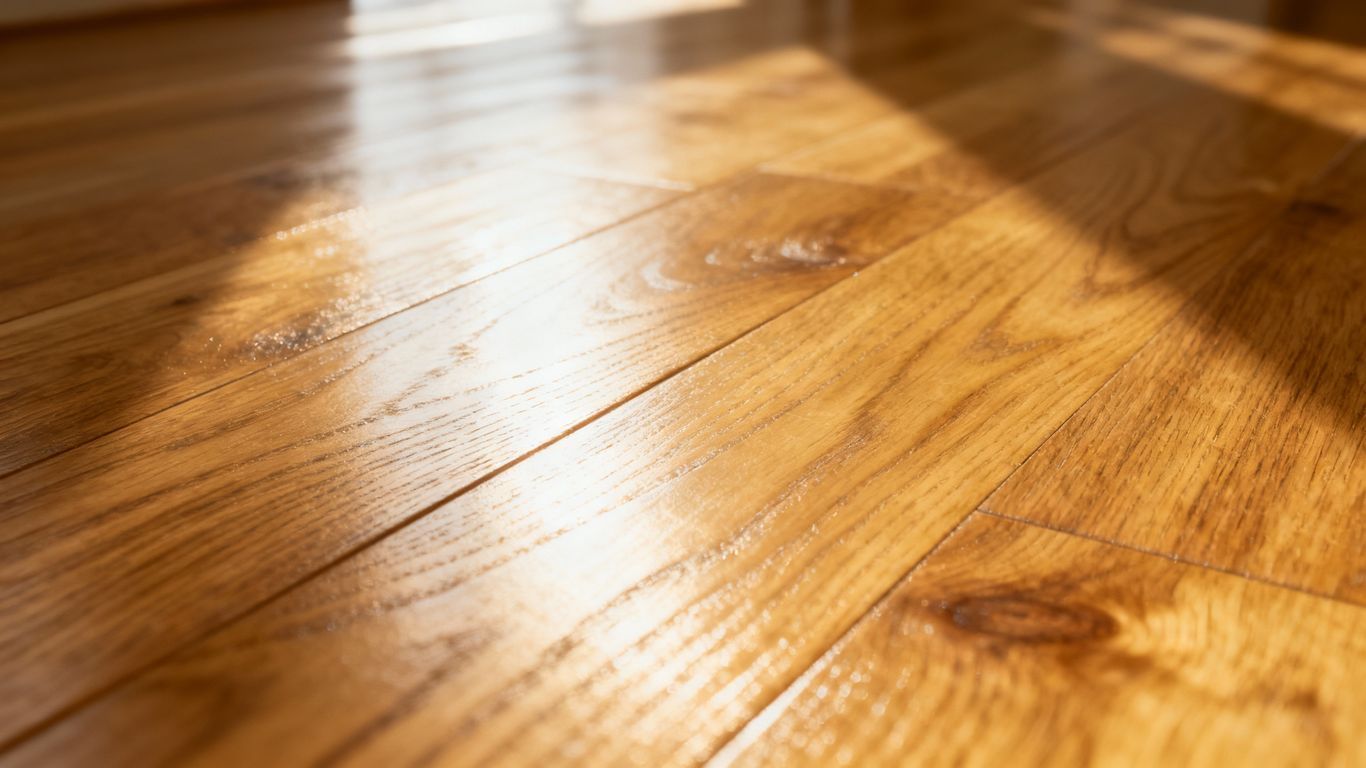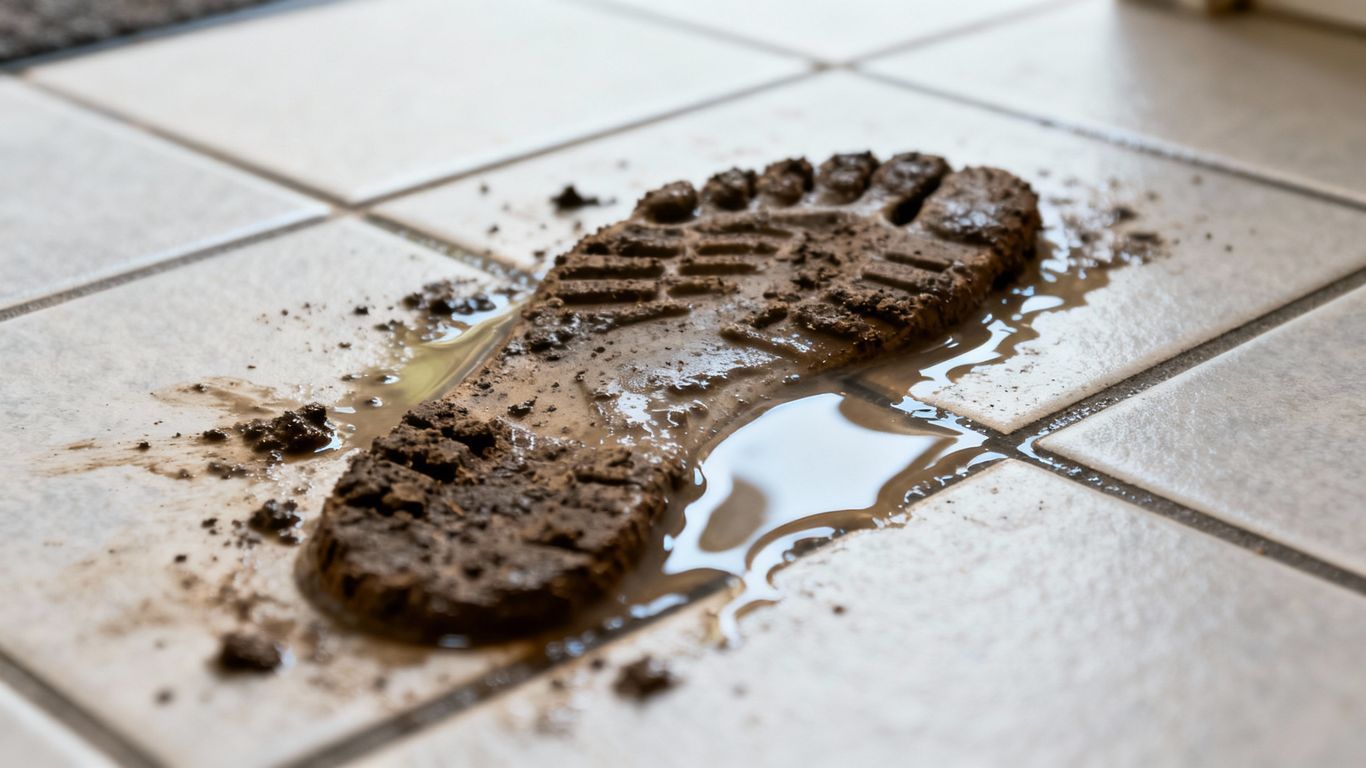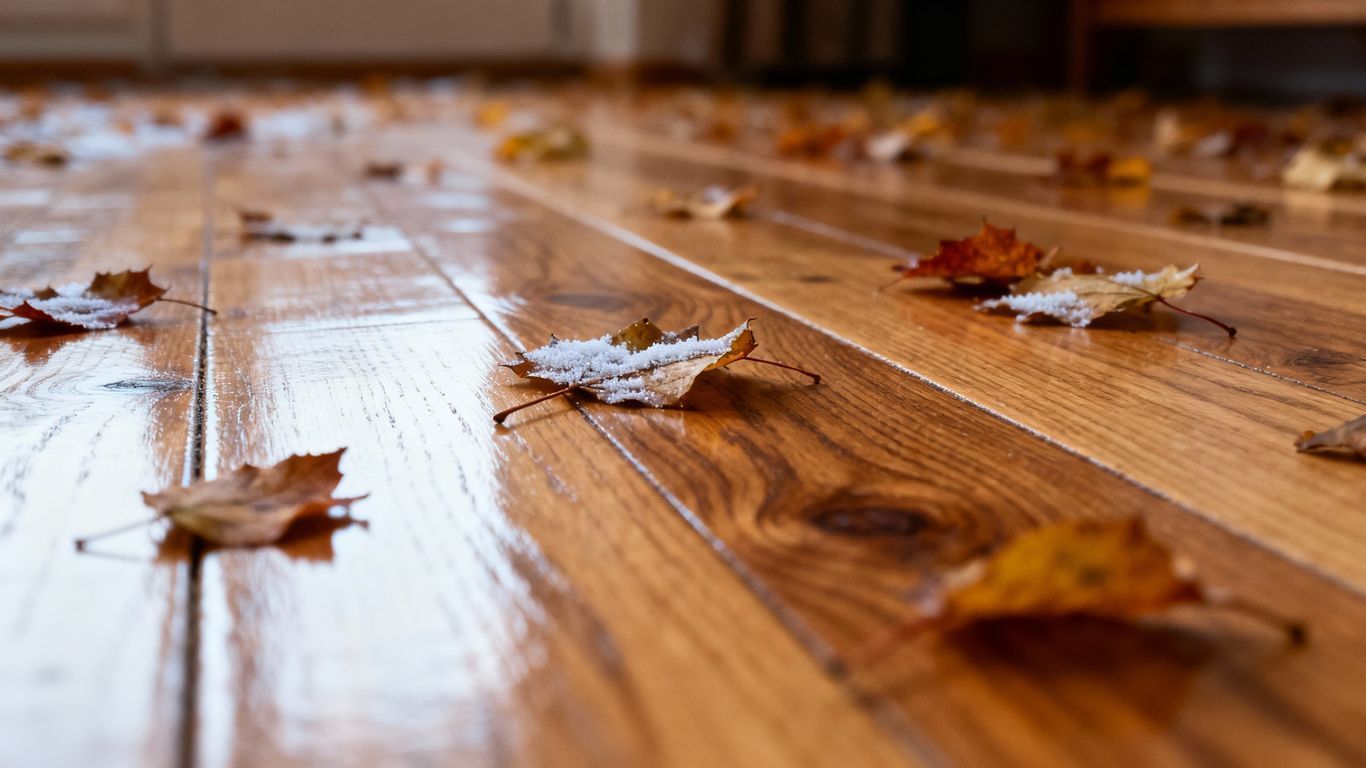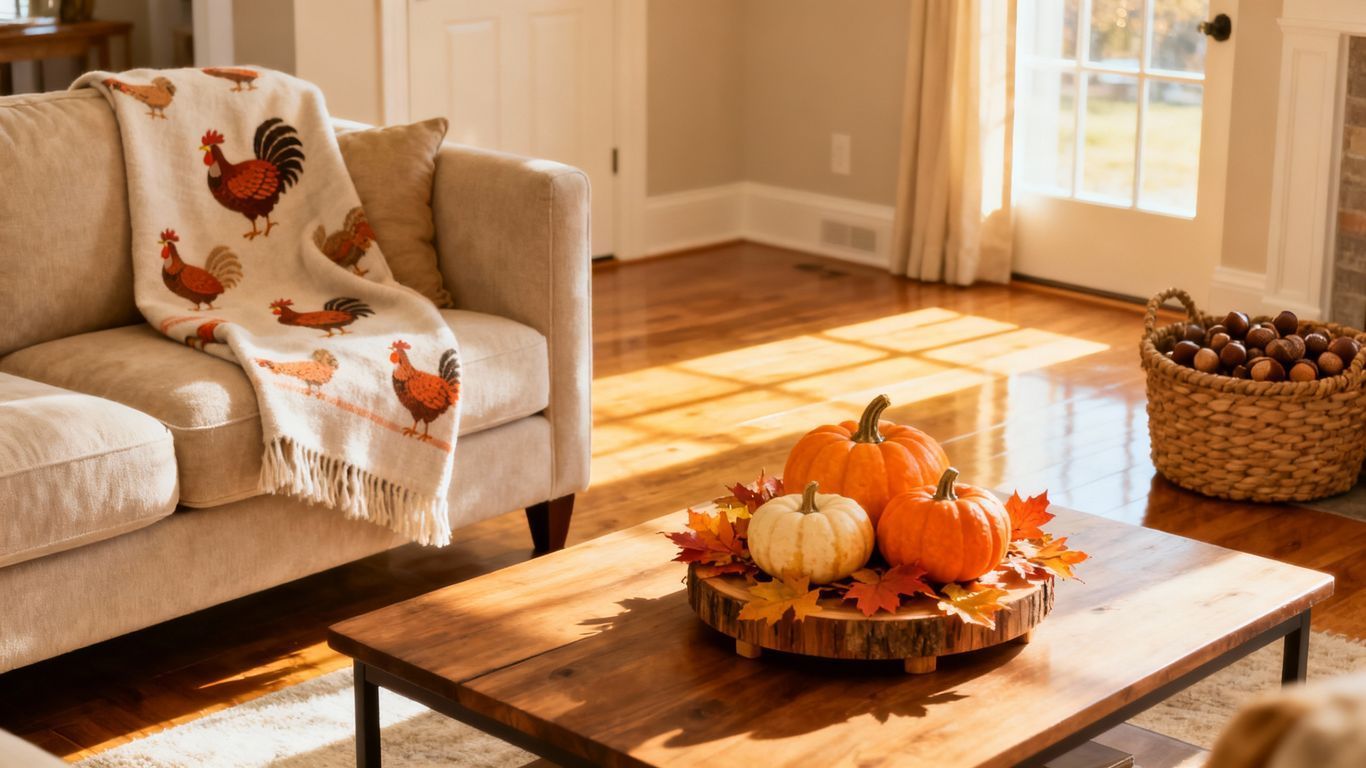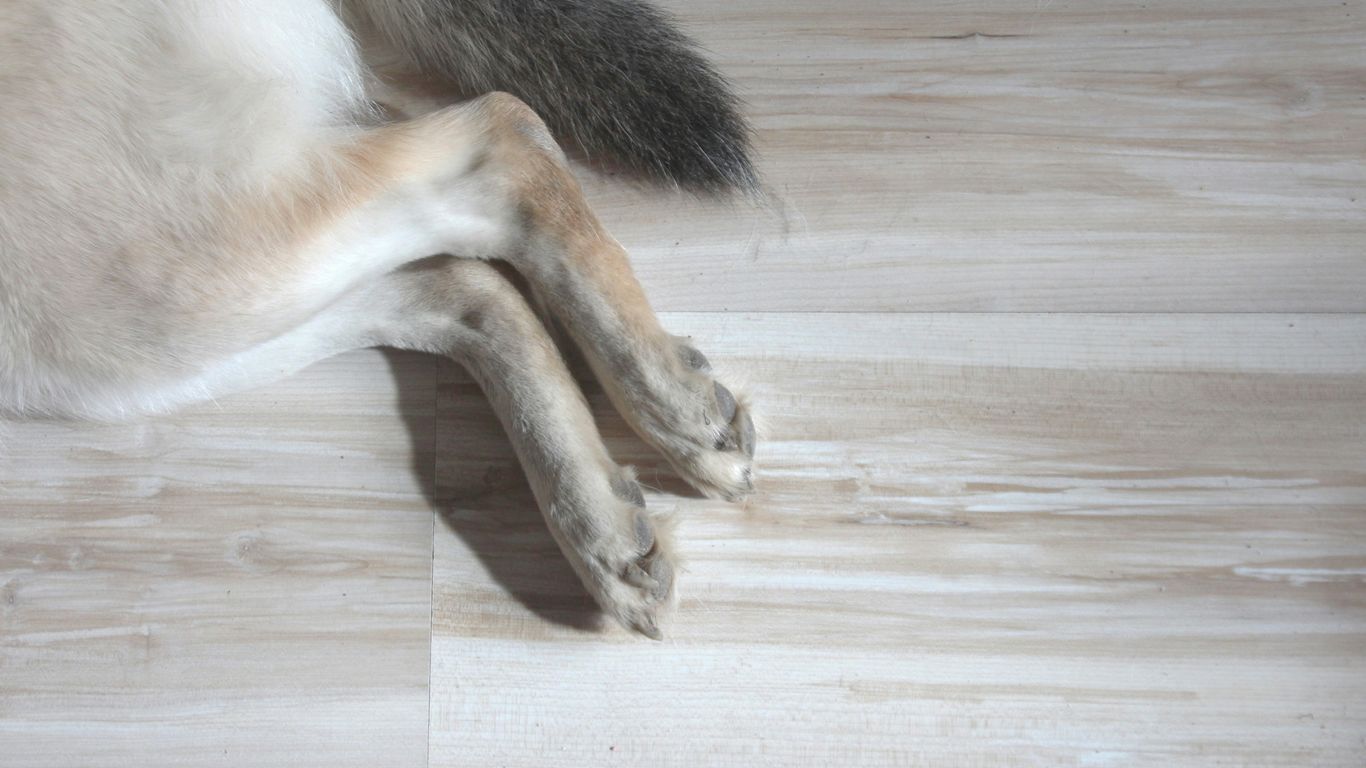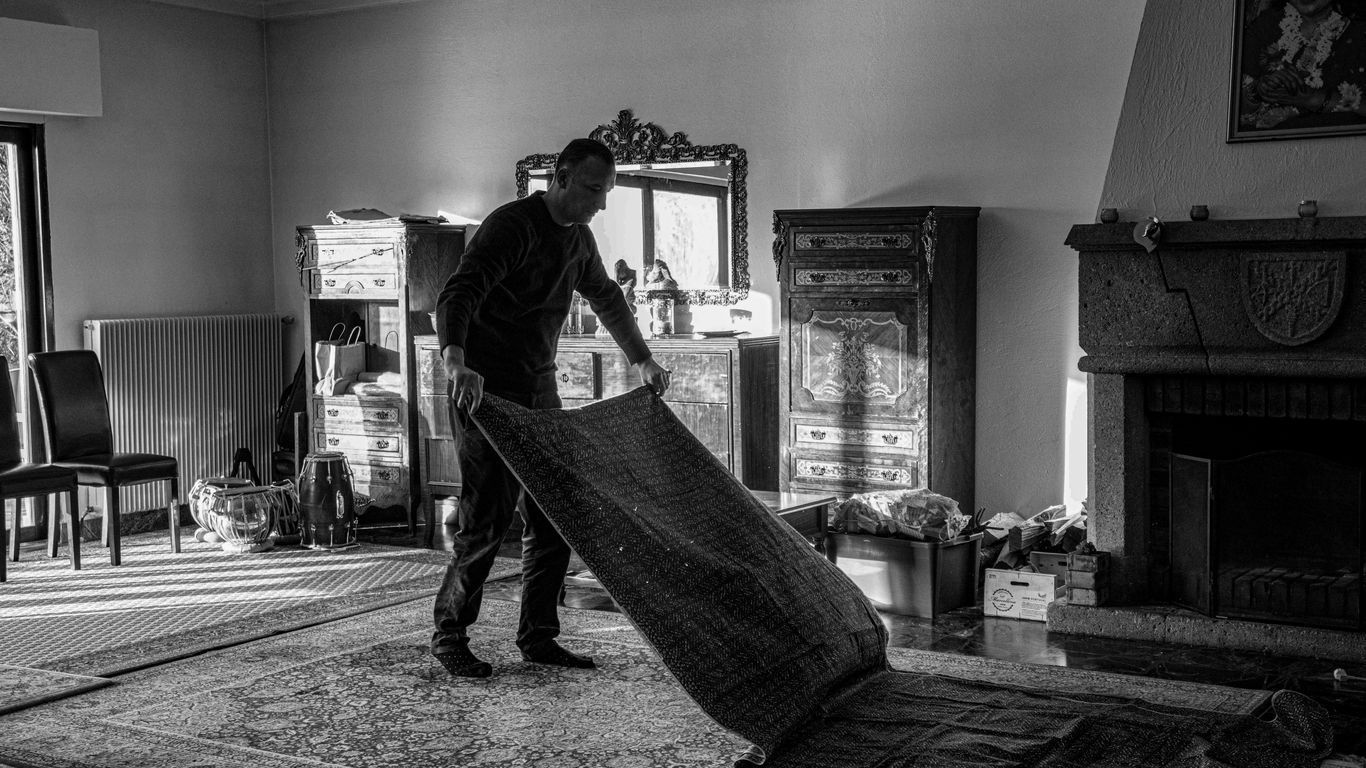How Homeowners in Ringgold & Fort Oglethorpe Can Prepare for Flooring Installation Day
Getting new floors installed is exciting, but the day itself can feel a bit chaotic if you're not ready. Whether you're looking at beautiful Ringgold hardwood flooring or another type, a little preparation goes a long way. This guide will help you get your home set up for a smooth installation day, making the process easier for both you and your installers.
Key Takeaways
- Clear your space: Move furniture and personal items away from the installation area.
- Protect your home: Cover or remove anything you don't want scratched or dirty.
- Talk to your installer: Confirm the plan and discuss any subfloor issues.
- Control the environment: Make sure the room temperature and humidity are right for your new floors.
- Plan for the day: Think about where pets and kids will be during the work.
Clearing The Way For Your New Floors
Getting ready for your new floors means clearing the stage so the installation crew can do their best work. It’s not just about moving furniture; it’s about making sure everything is out of the way and protected.
Relocating Furniture and Valuables
Before the installers arrive, you’ll need to move all furniture, rugs, and any decorative items from the rooms where the new flooring will be installed. Think about smaller items too – things like lamps, plants, and even knick-knacks on shelves. It’s a good idea to have a plan for where this stuff will go temporarily. Maybe a garage, a spare bedroom, or a friend’s place if you’re really tight on space. Don't leave anything heavy or delicate near the installation area. This includes electronics, artwork, and anything that could easily tip over. If you have large, heavy items like pianos or large entertainment centers, talk to your installer about whether they can move them or if you need to hire professional movers for those specific pieces. It’s better to be over-prepared than to have something damaged.
Protecting Existing Fixtures and Walls
Even though the crew will be careful, it’s smart to protect anything that won't be removed. This means covering or taping off baseboards, cabinets, and doorways. Sometimes, installers use a special tape that won't damage paint, but it’s always good to check with them beforehand. You might also want to put down drop cloths or plastic sheeting in hallways or other areas the crew will be walking through to protect your existing surfaces from dust and foot traffic. Think about any built-in features like fireplaces or kitchen islands; these might need extra protection around the edges. For a smooth start, confirming installation details with your provider is a good step, especially regarding subfloor preparation, which is key for a lasting finish. You can find more about this at First Class Wood Floors.
Taking the time to clear and protect your space beforehand really makes a difference. It helps the installation go faster and reduces the risk of accidental damage to your belongings or home.
Understanding Your Ringgold Hardwood Flooring Project
Before the installers even show up, it’s a good idea to get on the same page about what’s happening with your new floors. This isn't just about picking out a pretty color; it's about making sure the whole process goes smoothly from start to finish.
Confirming Installation Details
It might seem obvious, but double-checking all the little things can save a lot of headaches later. Make sure you and the flooring company are clear on:
- The exact type and quantity of flooring being installed.
- The agreed-upon start date and estimated completion time.
- Any specific patterns or layouts you discussed.
- Who is responsible for moving heavy furniture (usually you, but confirm!).
It’s always best to have these details confirmed in writing. This way, there’s no confusion about what you’re getting and when.
Discussing Subfloor Preparation
The surface underneath your new hardwood is super important. If the subfloor isn't ready, your beautiful new floors could end up with problems down the road. You’ll want to talk to your installer about:
- Checking for flatness: Uneven subfloors can cause squeaks and gaps.
- Moisture levels: Too much moisture can warp or damage hardwood.
- Existing flooring removal: If you have old flooring, how will it be removed and what happens to it?
- Repair needs: Are there any loose boards or damage that need fixing before the new floor goes down?
The condition of your subfloor really sets the stage for how well your new hardwood flooring will perform over time. A little attention here can prevent big issues later on.
Remember, your installer is the expert, so don't hesitate to ask questions. They can tell you if your subfloor needs any special treatment, like a leveling compound or a moisture barrier. For instance, if you're installing over concrete, proper acclimation is key, and that includes considering the subfloor's condition.
Preparing Your Home's Environment
Getting your home ready for flooring installation day is more than just moving furniture. It's about setting up the right environment so the new floors can settle in properly and the installation goes smoothly. Think of it like preparing a stage for a performance – you want everything just right.
Ensuring Proper Temperature and Humidity
Wood flooring, especially, needs time to adjust to your home's climate before it's installed. This process is called acclimation, and it helps prevent issues like warping or gapping later on. Your installer will likely tell you the specific temperature and humidity levels needed, but generally, you want to aim for a stable environment.
- Maintain a consistent temperature between 60-80°F (15-27°C).
- Keep humidity levels between 35-55%.
- Avoid drastic temperature swings in the days leading up to and during installation.
If your home has trouble maintaining these conditions, consider using a dehumidifier or humidifier. It might seem like a small detail, but it makes a big difference for the longevity of your new floors.
Proper acclimation is key to happy hardwood. Don't skip this step!
Managing Pets and Children on Installation Day
Installation day can be a bit chaotic, with people coming and going and tools everywhere. For the safety of your little ones and furry friends, it’s best to have a plan.
- Designate a safe zone away from the work area where pets and children can stay comfortably.
- Consider boarding pets or having a friend or family member watch them for the day, especially if they get anxious around strangers or loud noises.
- Keep children supervised and explain to them that the installation area is off-limits for their safety.
Having a clear plan for pets and kids will make the day less stressful for everyone, including the installation crew.
What To Expect During Installation
So, you've prepped your home, confirmed the details, and now it's installation day! It's natural to wonder what exactly goes down. The installation process itself is usually pretty straightforward, but it's good to know what to expect. Your flooring pros will arrive and get right to work, often starting with laying down protective coverings to keep your walls and existing structures safe. They'll then begin the actual installation of your new floors, working methodically across the room. You might hear saws and other tools, which is totally normal.
The Installation Process Overview
- Room Preparation: This involves clearing the space, removing old flooring if necessary, and making sure the subfloor is ready.
- Layout and Cutting: The installers will plan the layout of the planks or tiles and start cutting them to fit the room's dimensions, including around doorways and corners.
- Installation: This is where the magic happens! Planks or tiles are laid down and secured according to the specific flooring type.
- Finishing Touches: Once the main area is covered, they'll install baseboards or trim, clean up, and do a final inspection.
Addressing Potential Challenges
Sometimes, things don't go exactly as planned. Unexpected issues with the subfloor, like unevenness or moisture, can pop up. If this happens, your installers will discuss the best way to fix it, which might involve extra steps or materials. It's also possible that the amount of flooring ordered might need a slight adjustment, though this is rare if measurements were accurate.
It's always a good idea to have a small buffer of extra flooring material on hand for future repairs, just in case. This is something you can discuss with your installer from 1st Class Flooring before they start.
Remember, communication is key. If you have any questions or concerns during the day, don't hesitate to ask your installation team. They're there to make sure your new floors look fantastic!
Post-Installation Care and Maintenance
So, your beautiful new floors are finally in! That's fantastic. But the job isn't quite done yet. Taking care of your new floors right after installation is super important for making them look great for years to come. It’s not complicated, but there are a few things you’ll want to do.
Initial Cleaning and Protection
Once the installers are finished and have packed up, you'll want to give your new floors a gentle clean. Usually, a quick sweep or vacuum with a soft brush attachment is all that's needed to pick up any dust or small debris left behind. Avoid using any harsh cleaning chemicals or wet mops right away, as the flooring might still be settling, and you don't want to introduce too much moisture. It’s also a good idea to put down felt pads on the bottom of all furniture legs before you start moving things back. This stops scratches before they even have a chance to happen.
Long-Term Care for Ringgold Hardwood Flooring
Keeping your hardwood floors looking their best involves a few regular habits. Here’s a quick rundown:
- Regular Cleaning: Sweep or vacuum your floors weekly to prevent grit from scratching the surface. Use a vacuum cleaner with a soft brush attachment, not one with a beater bar.
- Spill Management: Wipe up spills immediately with a slightly damp cloth. Don't let liquids sit on the wood.
- Protect from Sun: Direct sunlight can fade and damage wood over time. Use curtains or blinds to block harsh rays, especially during peak sun hours. You can check out some tips on home exteriors to help with this.
- Entry Mats: Place mats both inside and outside entryways to catch dirt and moisture before it gets tracked onto your floors.
Remember, consistency is key. A little bit of regular care goes a long way in preserving the beauty and integrity of your new hardwood floors. Think of it as giving them a little spa treatment now and then.
For more detailed advice on maintaining your home's features, you can explore the Durante Home Exteriors blog.
Keeping your new floors looking great is simple! Regular sweeping and occasional damp mopping will keep them clean. For deeper cleaning, check out our recommended products. Want to learn more about keeping your floors in top shape? Visit our website for detailed tips and advice.
Ready for Your New Floors!
So, you've done your homework and prepped your home. That's a big step! Getting ready for flooring installation might seem like a lot, but taking these simple steps really makes a difference. Your installers will have an easier time, and you'll be one step closer to enjoying those beautiful new floors in your Ringgold or Fort Oglethorpe home. Just imagine how great it will look! Now, sit back, relax, and get ready for the transformation. It’s going to be worth it.
Frequently Asked Questions
What do I need to move before the installers arrive?
It's best to move all your furniture, rugs, and anything else that might get in the way. Also, take down any wall hangings or decorations near the installation area. This makes it easier for the installers to do their job and keeps your belongings safe.
What about the floor underneath the old flooring?
Your flooring company will likely tell you if any special prep is needed for your subfloor, like leveling or repairs. It's a good idea to confirm this with them beforehand to make sure everything is ready for your new floors.
Does the temperature and humidity in my house matter?
Yes, keeping your home at a steady temperature and humidity level is important. This helps new flooring adjust properly and prevents issues like shrinking or expanding later on. Check with your installer for the ideal conditions.
How should I handle my pets and kids on installation day?
On installation day, it's wise to keep pets in a separate, secure room. Also, make sure children are supervised and stay clear of the work area to avoid accidents and keep the installation running smoothly.
What actually happens during the installation?
The installers will start by removing your old flooring, if necessary, and preparing the subfloor. Then, they'll carefully lay down your new flooring, piece by piece. They'll also trim doors if needed and clean up the main mess.
What should I do right after the new floors are installed?
After installation, you'll want to avoid walking on the new floors for a bit, usually a few hours, and avoid heavy cleaning for a day or two. Follow your installer's specific advice for cleaning and upkeep to keep your floors looking great for years.

